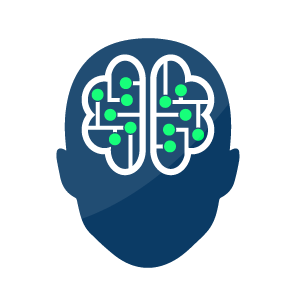Stroke Case Study | Virtual Reality Improves Balance and Functional Reaching
Written by Arik Yates in collaboration with the Neurological Recovery Center, Neuro Kinetix, and Neuro Rehab VR.
ABSTRACT
Cerebrovascular accidents or strokes, occur when there is a lack of blood flow going to the brain either by occlusion (ischemic stroke) or rupture of a blood vessel (Hemorrhagic stroke). This can lead to symptoms including paralysis of a particular side of the body depending on what side of the brain the accident occurred, decreased balance and coordination, even difficulty speaking and understanding. The prognosis of these patients vary however, the quicker pharmacological treatment along with physical and occupation therapy efforts can begin, the greater the outlook is. Seeking specialized treatment can be challenging, however virtual reality is beginning to show improvements in function on the affected side of individuals who suffered a stroke when combined with traditional physical/occupational therapy(1). This case study involves a patient who had a left cerebrovascular stroke with a history of transient ischemic attacks. Patient received virtual reality exercises with regular physical and occupational therapy. The study documents the patient’s progress using VR regularly over the course of 7 months.
INTRODUCTION
The patient is a 70 year old female diagnosed with a Left Cerebrovascular accident in 2002 as well as reported “Transient Ischemic Attacks in 2013”. With a history of performing regular physical therapy, she had made functional improvements. However, she required an attendant in order to guard and assist with standing balance during activities of daily living and walking with her rolling walker. This patient was admitted to the Neurological Recovery Center in 2017. Beginning in June of 2018 the patient began to perform virtual reality exercises 3x a week during her therapy sessions. Her routine consisted of 15 minutes of Virtual Reality exercises utilizing Neuro Rehab VR’s XR Therapy System.
CLIENT CHARACTERISTICS
Patient is a white female 70 years old with presentations of decreased coordination of right arm and leg noted by the challenge patient faced when reaching towards objects with her right arm with slight intention tremor and difficulty holding balance longer than 1 minute. Patient reports that she would like to “do more by myself”. This patient lives with her daughter who helped her with activities of daily living, driving her to therapy/store/restaurants. She was examined and was under the care of William Pittmon PT, DPT and Arik Yates, PTA, Maddie Andrus, PTA, and Amber Daniels, PTA.
EXAMINATION FINDINGS
Patient was tested 5/29/2018 using the BERG balance assessment with a score of 30/56 (walks with assistance), the ability to hold balance with eyes open for 60 seconds/eyes closed for 30 seconds, and unscrew 5 screws with adaptive screw driver in 5 minutes with less intention tremor.
INTERVENTIONS
The administered VR exercise was Retail Therapy which required the patient to grocery shop within a virtual grocery store, picking up items on various shelf levels with her right upper extremity outside of her base of support. This exercise was performed in 15 minutes with items varying in location and auditory cues given when patient’s right upper extremity would approach tasked object while holding their balance. She performed these virtual reality exercises 2 x per week.
OUTCOME
During patients re-evaluation on December 12, 2018, patient demonstrated the ability to hold balance for 2 minutes with eyes opened/1 minute eyes closed, she achieved a Berg Balance score of 45/56 (independent), and un-screwed 5 screws in 5 minutes with noted decrease in patient’s intention tremor.
DISCUSSION/CLOSING
Through the inclusion of Virtual Reality exercises using Neuro Rehab VR’s XR Therapy System, the patient showed functional improvements from her revaluation on (pre-VR integration) May 29, 2018 as noted by the gains reported on December 18, 2018 (post VR integration). While normal physical therapy contributed, it was found that VR exercises expedited achievement of patient and therapist goals.
1. Physiopedia. “Virtual Reality for Individuals Affected by Stroke.” Physio-Pedia, https://www.physiopedia.com/Virtual_Reality_for_Individuals_Affected_by_Stroke. Accessed Monday October 2020.

